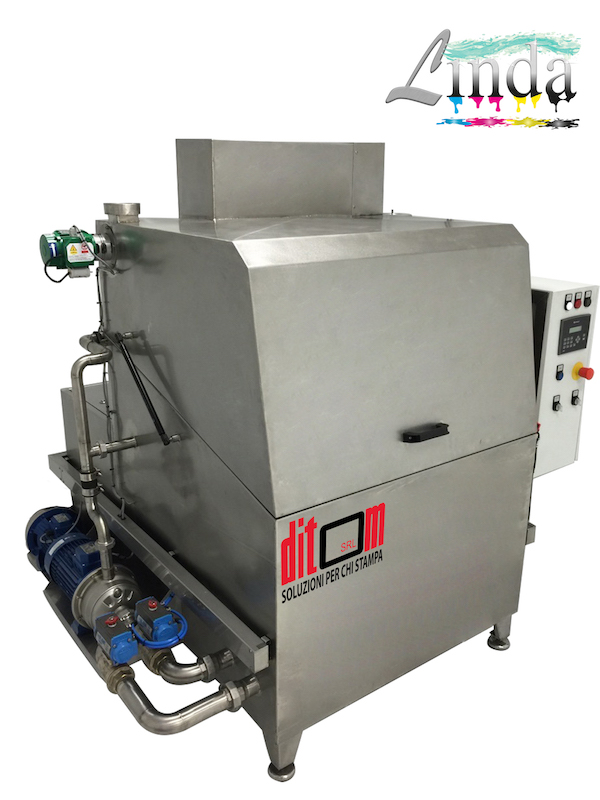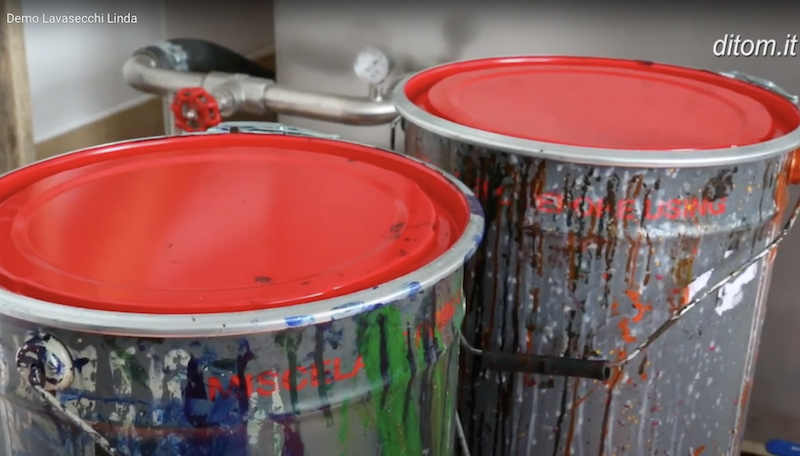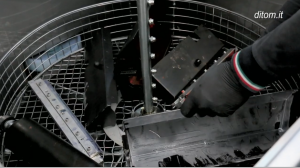Home » BAT and EU Directive 2024/1785: Innovation and Sustainability for Industry
BAT and EU Directive 2024/1785: Innovation and Sustainability for Industry
Le nuove normative europee e le BAT (Best Available Techniques)
aprono la strada a un’industria più sostenibile, efficiente e rispettosa dell’ambiente.
Scopri come adeguarti alle nuove direttive con nostre soluzioni di lavaggio.

REQUIRE MORE DETAILS
Our wide range of products and equipments
BUY NOW ON LINE!
-
Sale!

Detergente per lavapezzi, 20 kg (Inchiostri WB)
100,00 €Original price was: 100,00 €.79,00 €Current price is: 79,00 €. Add to cart -
Sale!

Detergente giornaliero per pulizia clichés, anilox e parti macchina, 20 kg (Inchiostri UV-SB)
186,80 €Original price was: 186,80 €.168,12 €Current price is: 168,12 €. Add to cart
BAT and EU Directive 2024/1785: Innovation and Sustainability for Industry.
A New Chapter in Environmental Regulations.
With the publication of Directive 2024/1785, the European Union strengthens its commitment to preventing and reducing industrial pollution, expanding the scope of Directive 2010/75/EU. The new regulatory framework places even greater emphasis on environmental sustainability, production efficiency, and the protection of the climate and human health.
In Italy, Directive 2010/75/EU had already been transposed through Legislative Decree 46/2014, which introduced the concept of BAT (Best Available Techniques). With the 2024 update, these regulations become more stringent and are integrated with long-term goals for a circular and climate-neutral economy.
What are BATs and why are they important?
BATs (Best Available Techniques) represent the best available methods to reduce the environmental impact of industrial activities while ensuring economic efficiency. They are technological and management solutions that include:
- Reduction of pollutant emissions into air, water, and soil.
- Optimization of raw materials, energy, and water consumption.
- Prevention and efficient waste management, promoting circularity.
BATs are detailed in the BAT Reference Documents (BREFs), which are periodically updated to reflect technological innovations. The BAT conclusions form the basis for issuing Integrated Environmental Authorisations (IEAs).
Which companies are required to comply with BATs?
BATs (Best Available Techniques) must be complied with by all industrial activities falling within the scope of Directive 2010/75/EU, which regulates industrial emissions. In particular, companies and plants carrying out activities listed in Annex I of the Directive—such as paper, textile, and food industries or chemical companies—are required to adopt them.
These are all companies that have a significant environmental impact by using technologies and industrial processes that are potentially polluting; therefore, they must comply with the limits and efficiency requirements defined in the BAT conclusions.
Some small and medium-sized enterprises or artisanal activities that do not fall within the scope of Annex I of the Directive may be exempt from the direct application of BATs but must still comply with other national or regional environmental regulations.
- Emissions of volatile organic compounds (VOCs) resulting from the use of inks and solvents.
- Consumption of resources such as energy, water, and raw materials.
- Management of waste and by-products related to printing and post-printing operations that can generate hazardous waste (e.g., cleaning of plates, anilox rollers, and machine parts with solvents).
Check the criteria set out in the Directive, which includes specific thresholds for solvent use.
The new features of Directive 2024/1785
This directive introduces important updates for industrial plants:
Extension of the scope
The reach of BATs is expanded to include new emerging techniques and specific associated environmental performance levels.Corporate Transformation Plan
Industrial plants are required to prepare a transformation plan for the period 2030–2050, outlining how the company will contribute to a sustainable and climate-neutral economy.Mandatory Environmental Management System
Companies must implement systems that include measures to prevent waste, reduce hazardous substances, and periodically monitor their environmental performance.Stricter Penalties
For violations, Member States must establish proportionate administrative and criminal penalties. For serious breaches, fines can reach up to 3% of annual turnover.Compensation for Damage to Human Health
For violations, compensation is provided.
Implementation Timelines
The Directive was published on 15 July 2024, will enter into force on 4 August 2024, and must be transposed by Member States by 1 July 2026.


The Linda bucket washers make it possible to wash and reuse ink buckets for the ink kitchen, making them ideal for Best Available Techniques.
How can we help you comply with BATs?
Our BAT-ready washing solutions and long-lasting detergents enable you to enhance the sustainability of your production:
-
Macchine di lavaggio BAT-ready !
- COMPACT BUCKET WASHER
Reuse of buckets to reduce operating costs and waste generation.
Disposal of unusable buckets as non-hazardous waste.
Savings on water, energy, and consumables.
Reduction of waste disposal and related costs.
- PLATE AND PARTS WASHERS FOR TRAYS AND DOCTOR BLADE CHAMBERS
Reuse of washing products and reduction in raw material consumption
Reuse and savings on water and energy for cleaning
Reduction of waste disposal and related costs.
- ANILOX WASHERS
-Reduction in the consumption of washing products
-Reuse and savings on water and energy for cleaning
-Reduction of waste disposal and related costs.
-
Long-lasting detergents in line with Best Available Techniques
- Formulas that can be reused multiple times through simple decanting.
- Non-flammable detergents, also available in versions without hazard symbols/warnings.
- Efficient products at low temperatures for reduced energy consumption.
- Reduction in disposal costs thanks to decantation.
- Pronti all’uso senza bisogno di attrezzature complesse.
BAT and the Future of Your Company
To obtain the Integrated Environmental Authorisation, a mandatory administrative measure for certain industrial activities, it is essential that industrial plants adopt pollution prevention and control measures based on BATs (Best Available Techniques) in order to minimise environmental impact.
Key features of the Integrated Environmental Authorisation:
- Environmental integration: The IEA considers the overall environmental impact of the plant on air, water, and soil and regulates its emissions.
- Specific conditions: Includes emission limits and requirements related to:
- Waste management.
- Energy and water consumption.
- Environmental incident prevention measures.
- Periodic update: It must be updated to comply with new regulations or emerging technologies (BAT).
- Duration: The IEA has a limited validity period, which varies according to local legislation, and is subject to inspections and renewals.
- Reduce environmental impact and enhance corporate reputation.
- Ottenere l’Autorizzazione integrata Ambientale in modo rapido ed efficiente.
- Adopt cutting-edge technologies that enhance competitiveness and reduce operating costs.
Contact us for your sustainable transition!
Our integrated washing systems use innovative technologies compliant with BATs. Investing in the future means choosing solutions that respect the environment and deliver tangible savings for your company.

Together, we can build a more sustainable and circular future.
You can contact us for details We will send you videos and testimonials with all documentations.
More details
Recent Articles:

A single parts washer to clean flexo trays, doctor blades, buckets, and screen printing frames.
Clean in just a few minutes WITH A SINGLE MACHINE:trays, doctor blades, ink buckets, and screen printing frameswithout using harmful solvents,even if you need to

Long-lasting and reusable detergents: the eco-friendly future of flexo printing.exo
Discover how long-lasting and reusable detergents.are revolutionizing the flexographic printing industry.by offering sustainable solutions for a cutting-edge industry. The need to embrace environmental sustainability has
